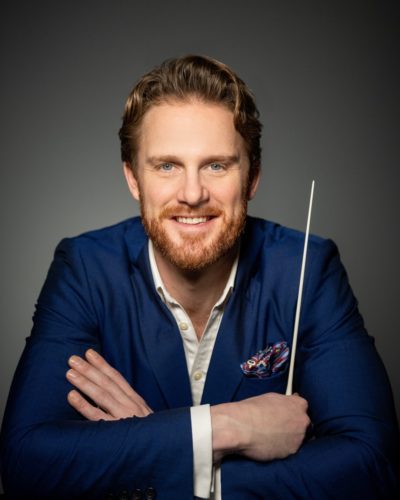 Courtney Lewis, Music Director of the Jacksonville Symphony
Courtney Lewis, Music Director of the Jacksonville Symphony
On March 8 and 9, we present a program of French and American music featuring a world premiere by Courtney Bryan. Courtney was our first Mary Carr Patton Composer-in-Residence a few years ago, and we’re delighted that she’s written us a second piece, entitled “Visual Rhythms.” The piece takes its title from a painting by the African American artist Alfred Smith, in which the artist depicts musical rhythms visually. In Courtney’s work, she takes this idea full circle, starting out with the visual as inspiration for music.
Courtney’s piece is a series of vignettes, each one a musical response to a photograph or artist, all of whom are significant in Black culture. “Visual Rhythms” begins with a movement entitled “Autumn Garden,” after a painting by Norman Lewis, a painter who began as a social realist in the middle of the 20th century but gravitated towards abstraction in his later work. Another movement responds to Romare Bearden’s painting “Circe,” in which the all-powerful goddess from Homer’s “Odyssey” is presented as a Black woman in traditional west African clothes. Part of a series Bearden painted in 1977 in which the entire story of the “Odyssey” is retold with Black characters, Courtney’s music is bold and forthright depicting the goddess who was feared for turning men into swine. Other movements respond to photographs, interestingly Herman Leonard’s portrait of Billie Holiday from 1953. The portrait depicts Holiday mid-song with a cloud of cigarette smoke swirling around the microphone. Courtney captures the atmosphere perfectly with a sensuous alto flute solo and sultry chords in the strings.
Ever since I first heard Courtney’s music, I’ve been drawn to the way in which she draws on different aspects of African American musical culture. As a brilliant jazz pianist, the language of that music is never far away, especially when referring to singers such as Billie Holiday or saxophonist Sonny Rollins, the subject of another portrait. But similarly, church music and spirituals, and the classical tradition are never far away either. It’s perhaps this unique expression of melding cultures that has attracted much attention to Courtney’s music recently. In December last year, she was awarded a MacArthur Fellowship, the so called “Genius Grant,” and she has also recently been signed by one of the most prestigious classical music publishers, the London-based Boosey and Hawkes, who publish everyone from Igor Stravinsky to Benjamin Britten. I’m delighted the Jacksonville Symphony continues to be a part of Courtney’s story. To whet your appetite for this exciting new work just a little more, I’m going to give my final words from the composer herself:
“I consider myself to be a minister of music, using this medium to share a sense of freedom, unconditional love and a spirit of healing. My spirituality is the central thread of my body of work. As a composer and performer, I aim to be ever present and honest in my music. My compositions often prioritize stories of Black women figures, respond to historical and contemporary social issues, act as a musical meditation as part of my ever-evolving personal interest in spirituality and value the importance of place. The culture and spirit of my hometown New Orleans remain a major inspiration in my work, as well as the various cities where I have lived. My overall ambition is the creation of uninhibited beauty.”
We begin these concerts with Maurice Ravel’s homage to Johann Strauss II, the king of the Viennese waltz: “La valse.” Written in the aftermath of the First World War, Ravel peers back into the glamor and relative ease of pre-war society in an elegant and seductive vision of the waltz, before gradually destabilizing it, bringing it into the present and ultimately forcing it to crash to a halt under the weight of its own decadence. And then we conclude with one of music’s most uplifting and joyful symphonies, Camille Saint-Saëns’ Third, nicknamed the “Organ Symphony.” Commissioned by the Philharmonic Society of London in 1886, Saint-Saëns wrote with a specific hall in mind – St. James’ in London, which contained a mighty organ. Luckily, so does Jacoby Symphony Hall, and the symphony will showcase the full power of the Bryan Concert Organ. The composer said of the work: “I gave everything to it I was able to give. What I have here accomplished, I will never achieve again.”
One of classical music’s great joys, sending our spirits soaring in a feeling of giddy excitement and spiritual ecstasy, some critics have sensed an underlying program in the symphony – a depiction of The Resurrection. Certainly, the work’s journey from what could be described as human nervousness to divine confidence could be seen in this light. But the symphony can also be enjoyed in purely musical terms, brimming with joy and optimism.
We can’t wait to share this program with you on March 8 and 9.

